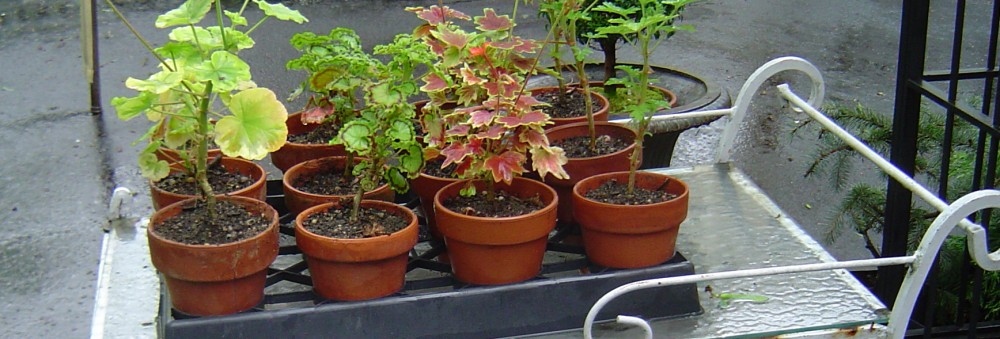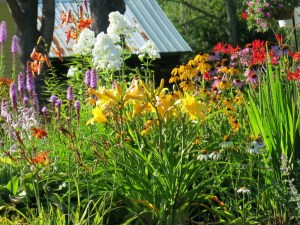No real gardening is happening this week. It is way too hot to spend any length of time outdoors. So I’m focusing on gardening indirectly – reading, watching films and generally pondering. Here is a sampling:
I’ve been doing a lot of travel this season and airports are becoming a rather familiar sight. And I’m rather unhappy about our New York hubs. There are hardly any sort of planned landscaping around the airports let alone nice pots of plants indoors. Given the glut of data supporting the positive effects of plants on our physical and mental healths, it would stand to reason that airports install gardens outside and within. After all, they are the very places where tensions run high, tempers flare, nervous tics develop, blood pressures soar, anxiety and panic set in and general fatigue prevails. Instead, it seems nobody told our airport powers-that-be about the enormous benefits that plants provide.
However, in Singapore, the gardens in the different terminals and the landscaping in the surrounding areas of the airport are so lovely that they are now world famous. This airport has truly taken its gardens seriously – there are vertical gardens, butterfly gardens, orchid gardens all over the place. In July, I found myself at Changi airport with a layover from midnight to 4:00 am and the only salvation I had were those gardens.
Then this past Sunday, I had to be in Amsterdam’s Schiphol airport at 6:00 am. Having partied at a wedding bash the night before, I was seriously sleep deprived and a tad grumpy. But, on emerging from the taxi at the airport, my eyes saw sunflowers all along the sidewalk. Great, big, happy pots of them. How could one not smile at the sight? Put me in a better frame of mind right away. You see?
*********
I saw a movie that I think many of you would enjoy. “A Little Chaos” is one of those mostly unheard of films with an impressive cast. Kate Winslett, Alan Rickman and Stanley Tucci to name three. It is a fictional story about a woman garden designer working with Le Notre at Versailles. While the story is more about the development of their relationship than the garden, the movie manages to combine period setting, life at that time, a glimpse of Versailles in the making to give the audience the slightly lofty feeling of watching something intellectual instead of just another romance.
On a hot day, sit back in a cool, comfortable room and watch this movie. A nice escape from the summer doldrums.
**********
“Gardening is one of the rewards of middle age, when one is ready for an impersonal passion, a passion that demands patience, acute awareness of a world outside oneself, and the power to keep on growing through all the times of drought, through the cold snows, toward those moments of pure joy when all failures are forgotten and the plum tree flowers.”
-May Sarton, Plant Dreaming Deep
I came across this passage and immediately took umbrage with middle age and impersonal. For one who has been gardening long before middle age and taken my gardening work, its successes and failures very personally, this certainly did not sit well. But the rest of the quote definitely nails what gardening is all about.
After more neutral minded pondering, I concede that most gardeners are not the twenty – somethings. We are in general a slightly more mature tribe. But then again, most young adults do not have the luxury of space, time or finances to garden. Age has a few perks I suppose. But the energy of youth certainly eludes.
Children might learn the joy of growing plants but as they reach independence, the immediacy of life and its quotidian demands take over. Gardening is set aside till one ‘settles down’. Only very few continue gardening in one way or another. For myself, all through college I kept plants in my room. I struck a deal with the campus gardeners – they’d look after my plants whenever I went home and I’d help with watering a specific garden the rest of the year. And in the following years, when I lived in apartments, I convinced landlords to let me cultivate a small patch outside. You can well understand my response to the part about gardening as reward for the middle-aged. I sure took that personally!
Let me know your take on this topic.
Note: Dr. Oliver Sacks passed away on August 30. He was a big hero of mine and I’d only recently written about my last meeting with him in June. I will forever cherish that time. When I’d mentioned to him that I was going to Singapore, he immediately mentioned the vertical gardens and orchids there! Please join me in honoring Dr Sacks by staying curious about everything in this world, treating all people with compassion and understanding and staying fully engaged in life.
Something to see! For the entire month of September, some of my watercolors and photographs will be on exhibit in three windows of Sotheby’s real estate office in Chappaqua ( corner of lower Greeley Ave and King Street, across from Starbucks). I hope you will stop by and take a look. I would love your feedback!
Please, I need your help in spreading the word! Thanks very much.
(c) 2015 Shobha Vanchiswar
[do_widget “Blog Subscriptions (Jetpack)”]


















































